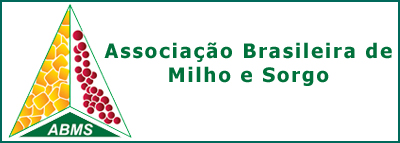SORGO FORRAGEIRO NA INTEGRAÇÃO LAVOURA-PECUÁRIA NO CERRADO: PRODUTIVIDADE E COMPOSIÇÃO QUÍMICO-BROMATOLÓGICA DA SILAGEM
DOI:
https://doi.org/10.18512/1980-6477/rbms.v15n2p251-261Abstract
RESUMO - Estudos envolvendo a adoção de diferentes alturas de colheita para ensilagem vêm a contribuir para o melhor entendimento dos benefícios do sistema de ILP com o sorgo forrageiro, proporcionando produção de volumoso com melhor qualidade para suprir a demanda alimentar de bovinos. Objetivou-se avaliar a produtividade e a composi-ção químico-bromatológica da silagem de sorgo consorciada ou não com o capim marandu no bioma Cerrado colhidos em duas alturas de corte. O experimento foi desenvolvido na Fazenda de Ensino, Pesquisa e Extensão da Unesp, em Selvíria, MS. Foram utilizados blocos casualizados com três repetições, em que os tratamentos corresponderam ao sorgo forrageiro cv. Volumax solteiro ou em consórcio com o capim marandu nas seguintes condições: (i) silagem do sorgo solteiro colhido a 45 cm de altura em relação à superfície do solo; silagem do sorgo consorciado ao capim marandu (semeado simultaneamente) colhidos aos (ii) 15 cm e (iii) 45 cm de altura em relação à superfície do solo. De maneira geral, o sistema em consócio simultâneo entre o capim marandu e o sorgo forrageiro colhido a 15 cm de altura para ensilagem, apesar do não estabelecimento do capim para colheita, proporciona maior produtividade de matéria seca sem alterar o seu valor nutritivo.
Palavras-chave: altura de corte, Sorghum bicolor, consórcio, Urochloa brizantha.
FORAGE SORGHUM IN CROP-LIVESTOCK INTEGRATION IN BRAZILIAN SAVANNA: PRODUCTIVITY AND CHEMICAL COMPOSITION OF SILAGE
ABSTRACT - Studies regarding the use of different heights at harvest for silage contribute to the understanding of the benefits of the crop-livestock integration system using forage sorghum, increasing the quality of odder for cattle. The objective of the present study was to evaluate the productivity and chemical composition of sorghum silage harvested at two heights, intercropped or not with palisade grass in the Brazilian Savanna biome. The experiment was carried out at in an experimental farm of UNESP, in Selvíria – MS, Brazil. Randomized block design was used with five replications, where the treatments corresponded to sorghum cv. Volumax, single or intercropped with palisade grass as follows: (i) sorghum silage harvested at 45 cm above the soil surface; sorghum and palisade grass silage (seeded simultaneously) harvested (ii) 15 and (iii) 45 cm above the soil surface. In general, the system of simultaneous intercropping of marandu grass and sorghum harvested at 15 cm for silage provided increased productivity of dry matter without changing its nutritional value, although grass was not cultivated to be harvested.
Key-words: cutting height, Sorghum bicolor, intercropping, Urochloa brizantha.
Downloads
Published
How to Cite
Issue
Section
License
Authors retain copyright and grant the journal right of first publication with the work simultaneously licensed under the Creative Commons Attribution License that allows the sharing of work and recognition of the work of authorship and initial publication in this journal.
Authors are able to take on additional contracts separately for non-exclusive distribution of the version of the paper published in this journal (eg, in an institutional repository or publish as a book), with acknowledgment of its initial publication in this journal.
Authors are permitted and encouraged to post their work online (eg, in institutional repositories or on their website) at any point before or during the editorial process, as this may leadto productive exchanges, as well as increase the impact and citation of published work.



